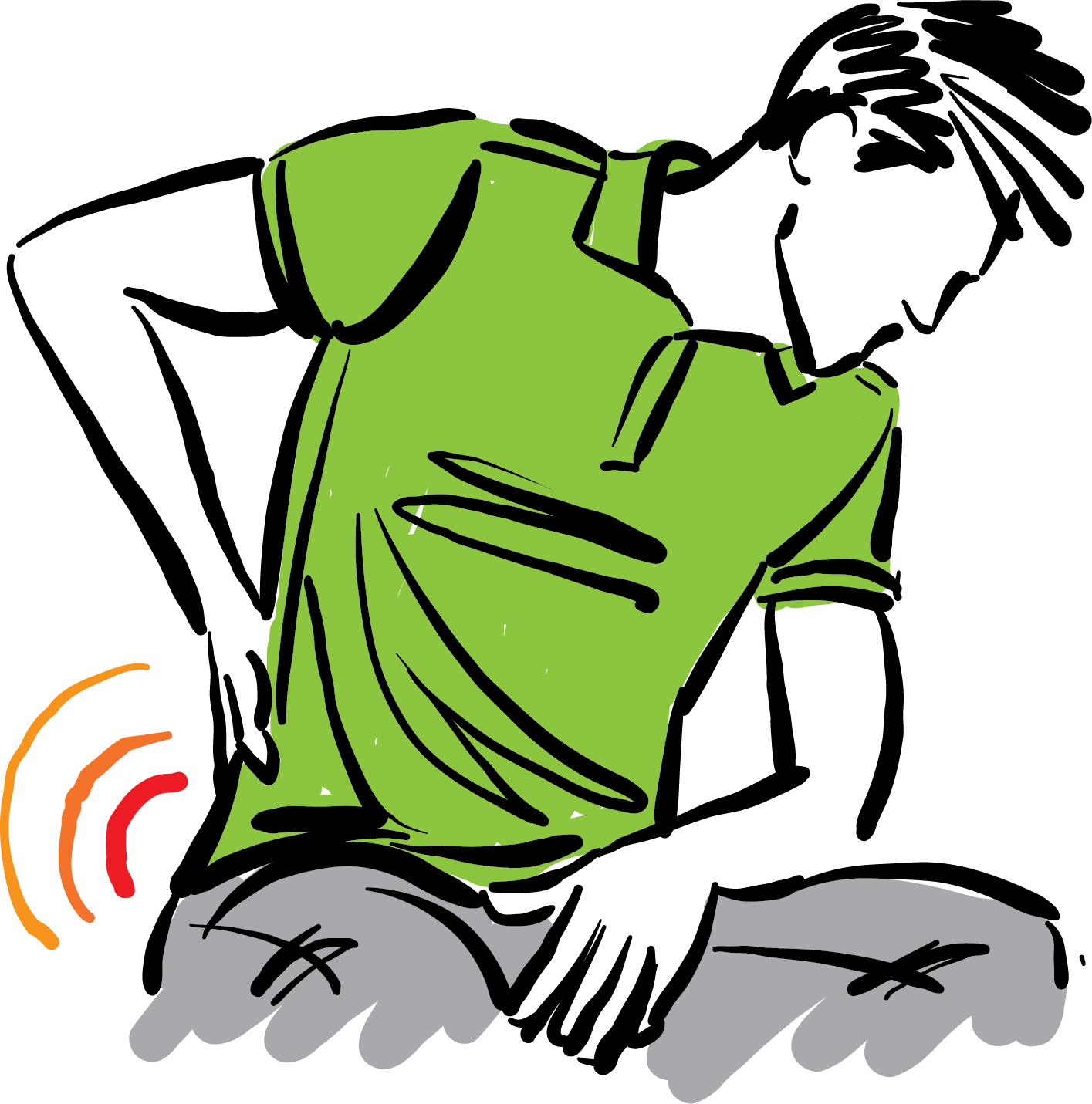HIP PAIN
Dr. Amy M. O’Donnell offers evidence-based treatment for hip pain
A number of factors from daily activities can contribute to chronic pain in the hips
The hip joint - the largest weight-bearing joint - is designed to withstand repeated motion, wear and tear. This ball and socket joint allows for fluid movement in many directions. Cartilage lines the joint and acts as a protection against friction as the joint moves.
Over time and with repetitive use, with running for example, the cartilage wears down and becomes damaged. Leg length discrepancy, pronated feet or a rotated pelvis may contribute to uneven forces on one hip and create an imbalance, possibly leading to hip pain. Muscles and tendons in and around the joint can get overused. The bursa, which sits between tendons and bones or muscles can also get overused. Falls or other injuries can fracture the hip bone. Any of these factors can lead to hip pain. A thorough evaluation is essential in determining the underlying cause of hip pain so that the proper treatment can be administered.
Causes of Hip Pain
Arthritis
Arthritic conditions such as osteoarthritis (degenerative joint disease) and rheumatoid arthritis are causes of hip pain, particularly in older adults. Arthritis leads to inflammation of the hip joint and the breakdown of the cartilage that normally cushions your hip bones. One predictor of an arthritic hip is the loss of “internal rotation” of the hip. To test this, sit on a chair with knees bent and feet touching each other. Slowly rotate one hip so that the foot is moved away. Now compare to the other side. If one foot does not move as far as the other or you have pain with that motion, you may have osteoarthritis. This condition also causes stiffness in the morning.
Bursitis
Inflammation of the small, fluid filled sacs (bursae) that protect muscles and tendons is usually due to repetitive use that overworked or irritated the hip joint. That pain may be superficially on the outside of the hip and worse after sitting, standing or walking for long periods.
Tendinitis
Referred to as “tendonapathy or tendinosis,” these strong bands are the extension of a muscle and attach to bones. This condition is a thickening of the tendon with fibrotic tissue developing and causing pain. In few cases, the tendon is actually inflamed. Mostly the result of overuse creating repetitive stress.
Muscle Strain
Repeated activities can put strain on the muscles and ligaments that support the hips. When these structures become irritated from overuse, they can cause pain and prevent the hip from functioning normally.
Effective Treatment of Hip Pain
As with many other musculoskeletal conditions, it is the combination of interventions that most effectively treats hip pain so as to relieve pain and restore the hip joint to normal function.
MLS Laser
Known for its effectiveness in reducing pain and inflammation, this Class IV laser can relieve pain immediately so you can return to activities of daily living quickly.
Ultrasound, Electrical Muscle Stimulation, Heat and Ice:
These adjunctive therapies are helpful with pain relief and restoring the joint back to normal range of motion.
Trigger Point Dry Needling
Trigger Point Dry Needling is effective in treating trigger points that may be the cause of hip pain.
Graston Technique
Most effective for “soft tissue conditions,” such as tendon, ligament, muscle and fascia, this well-researched and evidence-based therapy is essential in treating most causes of hip pain by breaking down adhesions and fibrotic tissue in those structures, that lead to pain.
Kinesio Tape
Best applied to support a joint or reduce muscle spasm, Kinesio tape has been used for two decades with athletes and weekend warriors to reduce pain and get them back on their feet again.
Preventing Hip Pain
Dr. O’Donnell has found that the best approach to preventing hip pain is early assessment. Whether you are a weekend warrior, avid gardener or elite athlete, evaluating your entire musculoskeletal system is key in preventing any injury. Also, stretching before an activity is important as well as exercising in moderation. Many hip injuries can be avoided if these simple steps are taken.
Rehabilitative Exercises
Stretching the hip joint is a first step in relieving pain and regaining joint mobility. Once the pain has subsided, then strengthening exercises can begin to help support the joint and make it strong again for activities such as climbing stairs. Using an exercise bicycle is generally a safe start to rebuilding a hip.
Mobilizing the pelvis or hip joint is important in rehabilitating hip pain. Gentle movement of both can enable the joint to move freely and relieve stress creating pain.
Orthotic Therapy
Custom made orthotics may be part of the treatment for hip pain if you have “pronated” or flat feet, the result of which can be rotated thigh and leg bones, creating undue stress on the hips. In some cases, orthotics along with the above interventions can eliminate hip pain forever. Dr. O’Donnell has had extensive training in evaluating for orthotics and has used ComfortFit Orthotic Lab for 30 years.
Functional Movement Screen (FMS)
FMS is designed to uncover underlying weaknesses, instabilities or asymmetries that can lead to musculoskeletal aches and pains. Once your hip pain is relieved, Dr. O’Donnell employs FMS in further “peeling the onion” to determine what the root cause is in hip pain.

